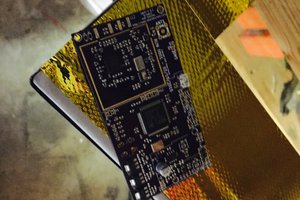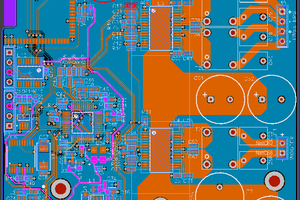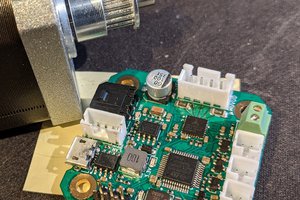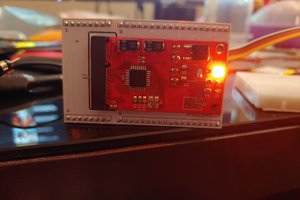Features:
- 12 input channels that are arbitrarily routable to any of 8 output channels.
- Onboard digital potentiometers on the input side with non-volatile storage. Pots are logarithmic with zero-cross detection, and are paired in order with their input numbers on the board's silkscreen.
- Onboard op-amps on the output side with 300mA drive capability to provide buffering for direct-drive of line-level signals.
- Onboard buffered voltage divider with exposed output and 300mA drive capability to aid design and implementation of input buffers.
- Resistors added to the input-side of the switch, but after the potentiometers to allow for simple resistance mixing of signals simply by routing two inputs to a given output without risking damage. Some caveats apply (discussed below).
- Input-side is left free-form to allow use with single-ended (unbalanced) or differential (balanced) signals, and/or DC-biased sources.
- Safe for 5v audio signals.
- Isolated analog and digital power planes.
- Silkscreen reflects the envisioned usage (stereo signals), but the driver allows for easy grouping of any number of channels.
- Breadboard-friendly
Specs and requirements:
| Parameter | Minimum | Maximum | Recommended |
| Digital voltage range | 2.7v | 5.5v | 3v - 5v |
| Analog voltage range | 4.5v | 5.5v | 5v |
| Channel current | 1mA | ||
| Current requirements (Digital) | <5mA | ||
| Current requirement (Analog) Note 0 | 1mA | 2.7A |
Notes:
- 0: Analog current requirement depends strongly on draw from outputs and VccDiv/2 pin. Figures given are total board ranges.
Full documentation can be found here.
 J. Ian Lindsay
J. Ian Lindsay
 Shane Burrell
Shane Burrell

 Pontus Borg
Pontus Borg
 FloppidyDingo
FloppidyDingo